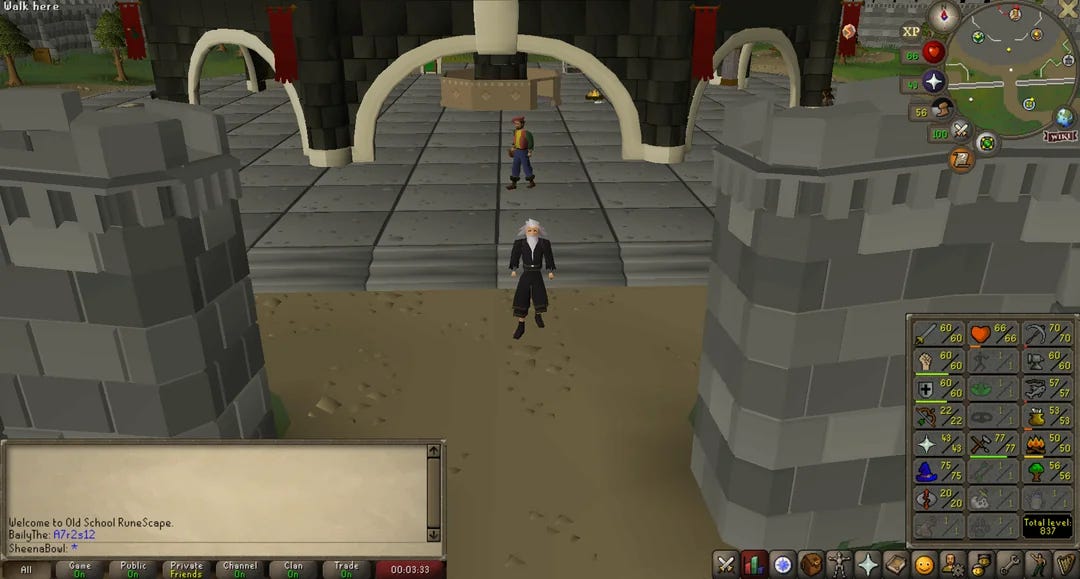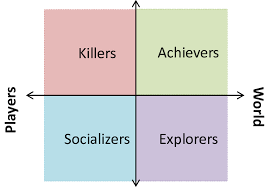I’ve been asked about my thoughts on how Generative AI will change the games industry frequently, and have been writing down notes for about a year now. Here are my thoughts.
I’ll start with directionally where I think things are headed, and then list out specific things that I think will definitely, probably, and won’t change.
Player Data Moats, especially for social player liquidity — For games where players are the primary content, declining player liquidity (the amount of players required to sustain an engaged live player audience) cause the declining curves that games like WoW and OSRS have experienced for decades, as the density of their networks go down. Players encounter fewer other players. Other players teach them less things. Fewer new players are retained. As a result, the game does not grow as much, and declines until a group of late stage core players are the majority of the graph.
Especially for games that have data available on how their players behave (you should probably start storing this if you aren’t already), this player liquidity problem can likely get solved, and new user retention significantly increased, as it will be near impossible for people to tell whether they are interacting with an LLM backed NPC or a real player. For example, an LLM can drive your first trade, tell you about a new area that it discovered as a friend, or teach you how to gather resources in different areas of the game, in a way that would be boring if it came from a traditional tutorial. Games could specifically bias the player LLMs to the areas that drive the most churn, such as lack of socialization or early game progression. As a result, games that require social player liquidity will grow faster, as long as the developers don’t maintain LLM backed NPCs past certain stages in the progression curve, and communicate so publicly to maintain the game integrity.
The separation of games as art, and interest graphs — The last sustainable multiplayer game (Valorant) was released in 2020. The space is eerily reminiscent of the social network space, which becomes incrementally harder for every social network with network effects of their own.
Core game mechanics (FPS, building, etc) ARE interest-based social networks with their own defensibility, platform ecosystems, and longevity. And for each network that gets to scale, it becomes more difficult for new entrants to build the player liquidity required to build a network of their own.
Memes and Content Trends become inflection points for UGC games on top of the networks built on core mechanics. First, people enjoy Fortnite mechanics, then you let people build their own imaginations in Fortnite mechanics. Same for GTA V, Same for Roblox. If the developers that own core mechanics (Riot, etc) play their cards right, they have legs for a UGC play around their core mechanics. They are the YouTubes, Snapchats, and Reddits of our space.
The way to win as a newcomer is find a new mechanic and build the best possible core loop around it as marketing and go-to-market, then let developers create their own imaginations that follow societal trends as quickly as possible. However, retaining mechanics are finite. Few winners, many losers, BUT many, many many "playable trends" that add spins to existing mechanics. Be the platform that aggregates a graph around a core mechanic and makes it easy for others to build trends, or become really good at building on top of trends on existing UGC platforms.
Games that fail to aggregate network effects around a core mechanic should be considered art, and lose defensibility as the barrier to entry to creating that art goes down with AI tooling. AAA companies have both the largest advantage and the largest disadvantage of all here. The largest advantage because engineers/qa/(3d/2d) artists will get 10-100x more productive with new tooling. The largest disadvantage because they will also face the biggest resistance in making the changes required to do so. And they are sitting on the largest, fastest depreciating art collection in history.
It will also become a lot easier to quickly clone games based on their core mechanics, which is why it’s so important that the companies that have a moat here continue to invest deeply in widening their moat through the best possible player experiences.
AI Companions as the new tastemakers — Millions of people are developing relationships with AI Companions already. And as LLMs get better at reasoning and creating custom personalities, we will likely see this increase. It is quite likely that content recommendations become a key component to how these assistants monetize. And I do not think it is unrealistic to assume that the next “Steam” could not be a game store, but a romantic AI assistant that millions of people want to play the next game it recommends with. If you have not yet been to /r/CharacterAI, now is probably a good time to start taking this seriously.
The Entertainment Boom — As player liquidity becomes less of an issue, we see more social multiplayer games succeed at creating new core game mechanics that scale. At the same time, generative AI will make humans more productive at their day jobs, which will result in more leisure time and leisure spend. Games likely see the majority of the upside here, alongside real-life sports and gambling.
The newcomers come from the TikTokification of games — We will start seeing games go viral at the same pace as memes on TikTok (and in many cases.. as memes on TikTok). We start consuming games more as the flavor du jour. Many hit successes that are designed as ephemeral experiences. Lethal Company is a great example.
Play itself gets unbundled into watch and play — Players are already watching as much, if not more than they are playing certain games.
Let me elaborate on why this matters — MMOs were as successful as they were because they aggregated every player type in Bartle’s taxonomy in a single place, and added a social layer.
Then, MMOs unbundled into individual loops, which made it difficult to maintain their relevance—
Idle games — for those that loved woodcutting and fishing on RuneScape
PvP games that required less level grinding and were able to get your friends playing in a group quicker. (DoTA/LoL etc).
Social networks and messaging apps took a lot of the pure social players
And economically motivated players found other ways to make money on the internet
MMOs were essentially the craigslist of video games. And it didn’t get unbundled by just video games. It was unbundled by many things, over many years.
Now, AI short form feeds are unbundling every game in the world into watching and playing. Why play through the game if you can get the same satisfaction from watching the top players play without needing to be by a device that can run the game? Or leaving your couch? The barrier to entry is lower, and this is why we continue to seek it out. At the cost of lower player liquidity in the games themselves. Though, when used correctly, watch and play become a loop that accelerate each other. In order to keep that loop in tact, game developers leverage their player data moat to keep watch and play in the same ecosystem where possible. I wonder how this changes how games monetize in the future.
To summarize:
Definitely change:
Far more games created by far more people
Resulting in more retaining core mechanics being discovered, and a far more competitive space as well
However, games that require player liquidity are now far more viable, especially if an existing moat exists
AI video feeds eat up more of the playtime of the actual games themselves
Probably change:
Games that are considered art (no network effects on core mechanics) become harder to get funded as competition becomes even fiercer, and the assets lose value quickly.
People will play a lot more games as LLMs make them more productive at their jobs
People are developing relationships with AI, leading to new surfaces for discovery
Won’t change:
Games that have existing network effects on their core mechanics are in a great position and are unlikely to get disrupted any time soon


